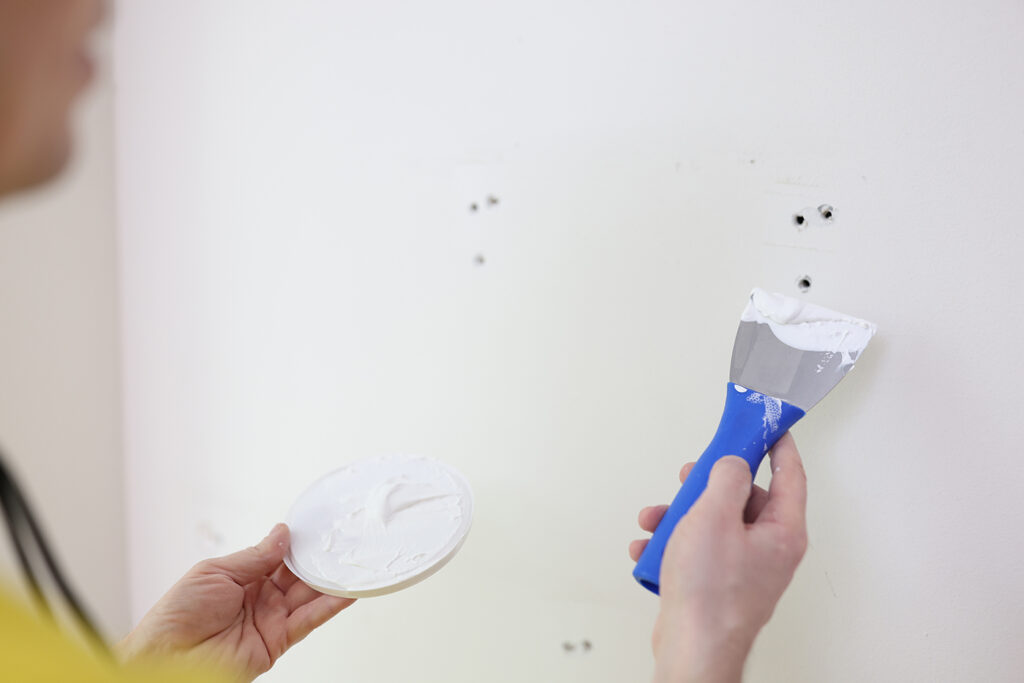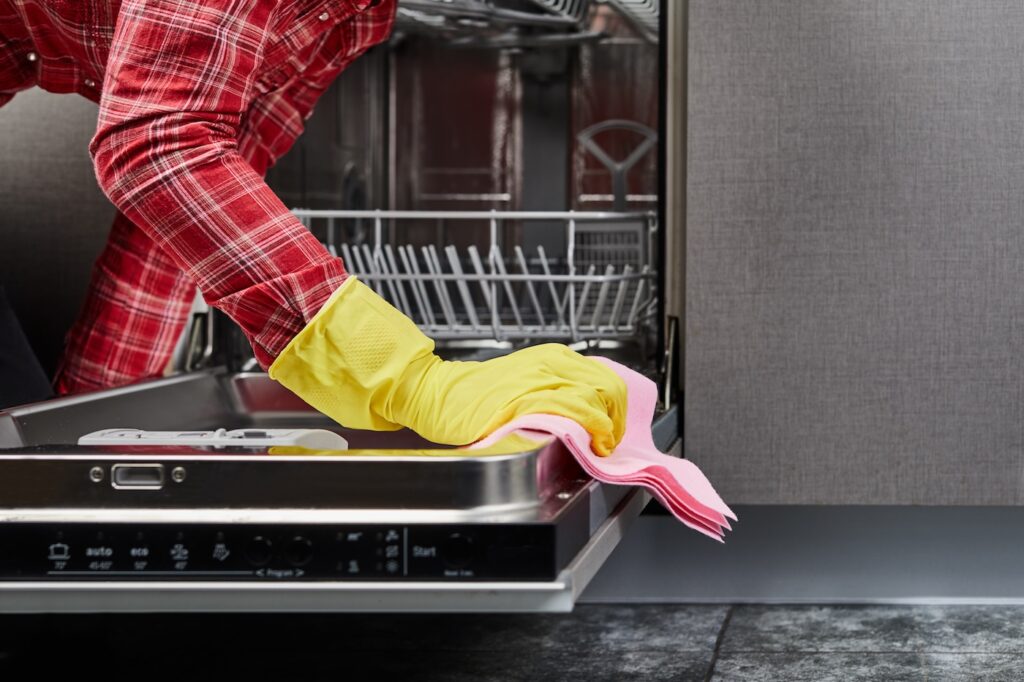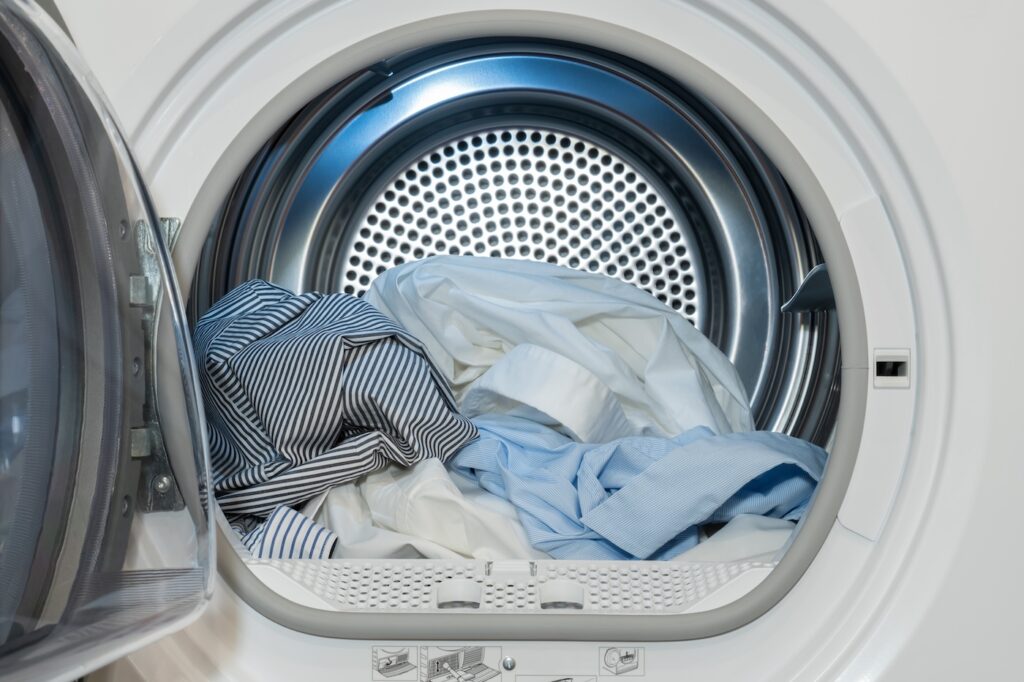We’ve all been there: a small accident leaves an unsightly hole in your wall, and you’re left with the task of fixing it. Whether it’s from a doorknob, an adventurous pet, or some DIY project that went slightly awry, you’re always better off knowing how to fix the problem. While small holes may seem like minor issues, larger ones can quickly become more intimidating. That’s why we’re here with this comprehensive guide on how to fill a hole in the wall. No matter the size of the hole, we’ve got you covered!
How to Determine the Size of the Hole
Before you dive into wall hole repair, it’s crucial to assess the hole’s size and type. For minor damage, a DIY approach with spackle and a putty knife is all you’ll need to think about. For larger holes or those in complicated wall types, however, you may need to use an adhesive patch kit or a new piece of drywall. It’s often best to seek help from a Tasker who can provide guidance on the most effective way to tackle the problem.
What to Use to Fill Holes in a Wall
To fix holes in your wall, you’ll need the right tools and materials. Here’s what you should have on hand:
- Spackle, wall putty, or another hole filler for a wall
- Putty knife
- Sandpaper
- Paint that matches your wall
- Paintbrush or roller
- Drop cloth (to catch any mess)
- Painter’s tape (for clean lines)
Having these supplies ready when you need to fix drywall will make the process smoother and ensure the best outcome.
How to Fix a Small Hole in Your Wall
Let’s start with the basics. If you have a small hole in your wall, you can repair it by following these steps:
1. Locate the Hole

When you need to patch a wall hole, first identify the hole’s size and type. For small drywall repairs, a simple patch will work. You can also mark small blemishes or dents with painter’s tape to find them again easily.
2. Fill the Hole

Apply spackle or wall putty to the hole using a putty knife. Ensure that it’s fully covered and that the surface is smooth.
3. Let It Dry

Allow the spackle to dry completely. This usually takes a few hours, but it’s always best to follow the product’s instructions. And just remember: if you try to sand or paint before this step is complete, it can cause the spackle to cave in or come off of the wall.
4. Smoothen and Paint

Once dry, sand the patched area until it’s smooth. Then paint over it with a matching color. If you have leftover paint from the last time you applied color to your wall, awesome! You’ll likely be able to use this to paint over the patch. If you need to buy new paint, be precise with your color matching, otherwise the repaired area will stick out once you start decorating your wall. If the repaired areas still stick out once the job is done, you can also consider adding wallpaper to your room.
How to Fix a Large Hole in the Wall
For larger holes, the repair process is a bit more involved but still manageable. To get started, follow these steps:
1. Prepare the Hole

Begin by cleaning the hole and removing any loose debris. Next, use a drywall saw to cut around the hole with clean edges. This will allow you to place two 1×3 boards behind the cut-out drywall and screw them to the drywall’s edges.
2. Apply a Patch

Next, cut a piece of drywall, and screw it onto the 1×3 boards. Then use spackle to completely cover the area. Remember to leave it as smooth as possible—this will make sanding easier!
3. Let It Dry

Allow the spackle to dry overnight. Once it’s dry, sand the area to make it smooth.
4. Smoothen and Paint

Finally, apply paint that matches your wall color.
Drywall Patching Tips

If you’re still wondering how to patch a hole in drywall, check out these additional tips to ensure a successful wall hole repair:
- Apply spackle in thin layers.
- For larger holes, use a fiberglass mesh patch for added reinforcement.
- When painting, feather the edges of the patched area to blend it seamlessly with the wall.
How to Fix a Hole in the Wall FAQs
Can you fix a hole in the wall without sanding?
Sanding helps achieve a smooth, even surface, but it might be possible to skip this step for very minor repairs or if you’re trying to mimic a particular wall texture.
How long after spackle can you paint?
Spackle usually dries within a few hours, but it’s best to follow the manufacturer’s instructions. A safe rule of thumb is to wait at least 24 hours before painting.
If you’re facing a wall hole that feels beyond your DIY skills or you simply want a hassle-free solution, home maintenance services on Taskrabbit are just a click away. Experienced Taskers can fill holes in your wall quickly and effectively, ensuring a seamless finish that matches your wall’s texture and color. Whether it’s a minor ding or a larger breach, remember that a hole in your wall doesn’t have to be a hole in your day—get it fixed, and enjoy your flawless walls once again!














